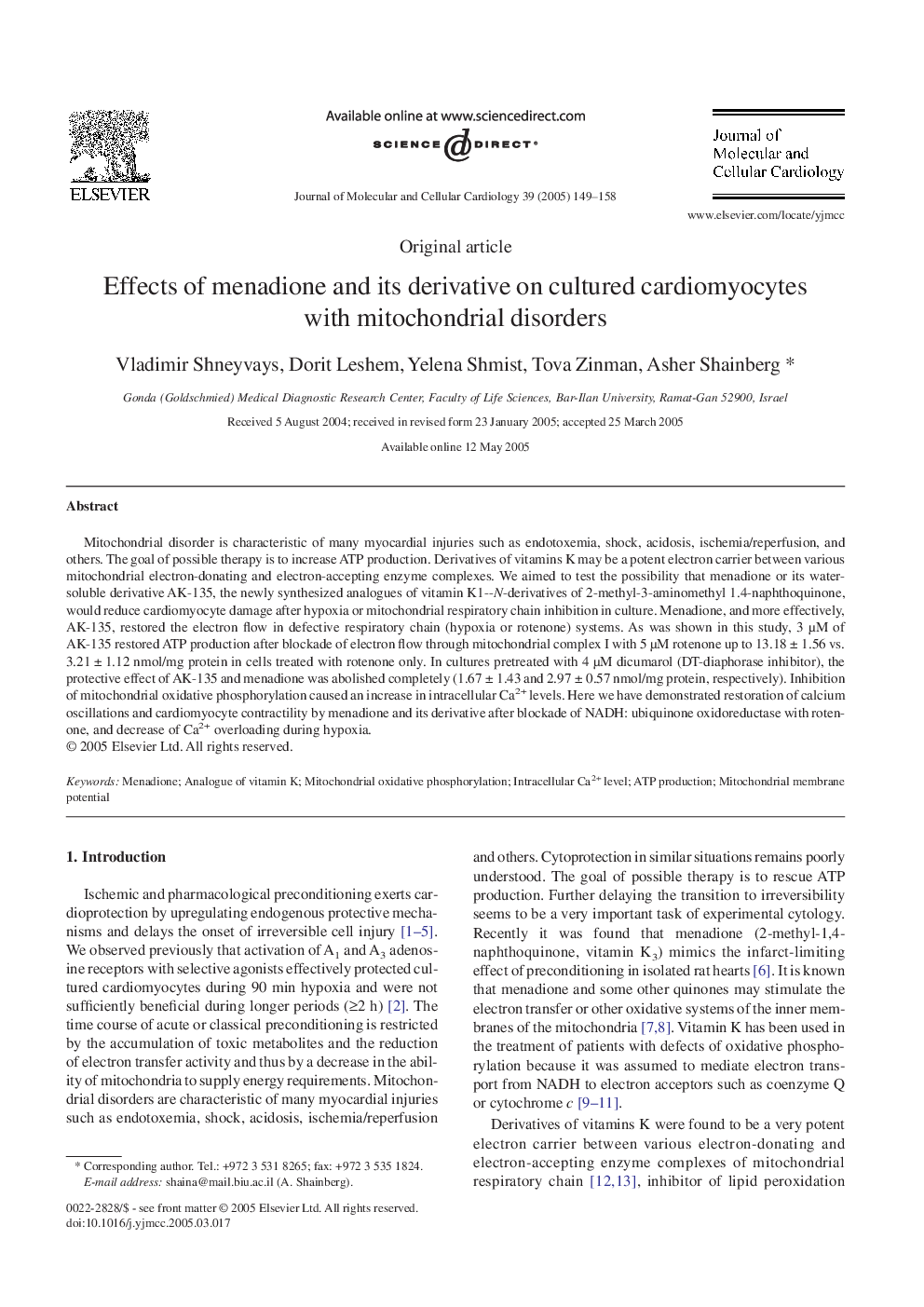| Article ID | Journal | Published Year | Pages | File Type |
|---|---|---|---|---|
| 10954414 | Journal of Molecular and Cellular Cardiology | 2005 | 10 Pages |
Abstract
Mitochondrial disorder is characteristic of many myocardial injuries such as endotoxemia, shock, acidosis, ischemia/reperfusion, and others. The goal of possible therapy is to increase ATP production. Derivatives of vitamins K may be a potent electron carrier between various mitochondrial electron-donating and electron-accepting enzyme complexes. We aimed to test the possibility that menadione or its water-soluble derivative AK-135, the newly synthesized analogues of vitamin K1--N-derivatives of 2-methyl-3-aminomethyl 1.4-naphthoquinone, would reduce cardiomyocyte damage after hypoxia or mitochondrial respiratory chain inhibition in culture. Menadione, and more effectively, AK-135, restored the electron flow in defective respiratory chain (hypoxia or rotenone) systems. As was shown in this study, 3 μM of AK-135 restored ATP production after blockade of electron flow through mitochondrial complex I with 5 μM rotenone up to 13.18 ± 1.56 vs. 3.21 ± 1.12 nmol/mg protein in cells treated with rotenone only. In cultures pretreated with 4 μM dicumarol (DT-diaphorase inhibitor), the protective effect of AK-135 and menadione was abolished completely (1.67 ± 1.43 and 2.97 ± 0.57 nmol/mg protein, respectively). Inhibition of mitochondrial oxidative phosphorylation caused an increase in intracellular Ca2+ levels. Here we have demonstrated restoration of calcium oscillations and cardiomyocyte contractility by menadione and its derivative after blockade of NADH: ubiquinone oxidoreductase with rotenone, and decrease of Ca2+ overloading during hypoxia.
Keywords
Related Topics
Life Sciences
Biochemistry, Genetics and Molecular Biology
Cell Biology
Authors
Vladimir Shneyvays, Dorit Leshem, Yelena Shmist, Tova Zinman, Asher Shainberg,
